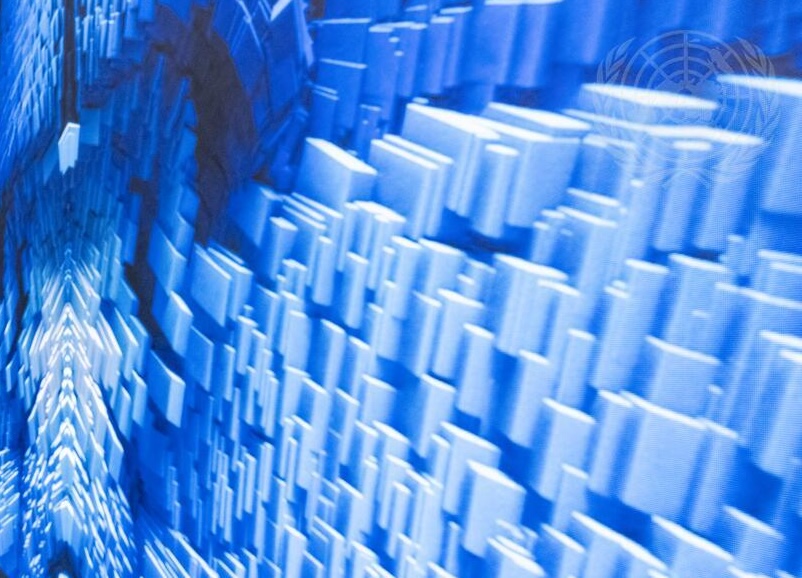The daunting task of Big Data management

Why EU R&D projects like DOME 4.0 are so mission-critical in our new world of AI-enhanced digitalization and our collective movement towards a more sustainable circular economy
Big data still creates big discussions. Experts know that data openness would lead to faster innovation and advancement when it comes to a truly circular and more sustainable economy, contributing to a more stable global environment. But these same experts, many who come from leading academic and research institutions and global industry and tech companies, know that extending the data olive branch in today’s day and age isn’t that simple. There is a plethora of potential booby traps for those who are too naive with their data.
Just to name a few:
Security risks
Problem number one is data security. Cybercrime is rampant: system-wide hacks, data theft and data hostage situations, cyber espionage, phishing, identity hacks… Let your guard down (or your firewalls and cyber security protocols more specifically) and you might be in for a nasty surprise.
Infrastructure
Data infrastructure is another one. Not everybody or every company or even every country for that matter has the actual resources to manage all this data: state-of-the art-powered (and cooled) data centers, fiber networks to move it around, the chip capacity for emerging AI metaverses – not to mention tech-educated staff to operate, code, trouble-shoot and control these mega-meta-data ecosystems – an entire task just in itself.
Data Interoperability
Although open source is the word on everyone’s lips, we all know deep down in our hearts that as a collective community of tech specialists, we aren’t there yet. Getting the data in the right place is one thing, but getting everyone who needs it to be able to use it correctly and concisely is another ball game altogether. When it comes to exchanging data between different people, systems and organizations, there is still some work to do.
Data ownership?
Then there are the “who” questions: who owns the data? What if I don’t want to give up my GDPR rights? What if a company wants to share some data yet still keep its IP safe? Can you have Big Data both ways?
And then…AI
And then the two letters on everyone’s lips: AI. What happens when the neural network or what I like to call the “Bot” takes a bite out of the data? We’ve taught neural networks to paint like Rembrandt, but can we teach AI to safely and securely handle more mission-critical data like formulations for composites used in airplanes and cars or full-scale operational data from the energy grid or a skyscraper?

These are all interesting questions that need to be addressed so that the positive potential of Big Data can contribute to faster and better innovation not only for tech companies like Siemens, but also entire industries and ecosystems. One such project that has addressed some if not more of these issues for the materials industry is an EU project called DOME 4.0 or The Digital Open Marketplace Ecosystem 4.0.
Set to conclude by the end of 2024, DOME 4.0 is a 4-year Research and Innovation Action (RIA) funded by the Horizon 2020 framework of the European Union. It focused on establishing a comprehensive industrial data ecosystem aligned with Open Science and Open Innovation objectives to enable the sharing of business-to-business (B2B) data for the purpose of value generation and the production of new or enhanced products, processes, and services.
“DOME 4.0 is a digital open-marketplace ecosystem. It deals with semantic enrichment of the B2B marketplace for data sharing,” explains Project Leader Dr. Amit Bhave from Computational Modelling Cambridge Ltd. or CMCL for short.
The idea of semantic enrichment
Well, Dr. Bhave makes it sound easy – which it isn’t — but the bigger question is: why is this important? Why does the materials industry (and other industries and ecosystems) need this? And how is it going to be done? Well, managing data is one thing, but doing it well is another.
Managing and harvesting today’s data and sets of data is a very, very complex task. You need to be able to access insights when it comes to relationship between various data and data sets, help users to understand the context and relevance of particular pieces of data, and have confidence in the accuracy of your results…just to name a few challenges. This is where the idea of semantic enrichment helps out. Semantic enrichment or adding metadata and content to the data itself enhances the context and gives more meaning to the actual data and its various relationships.
And this is exactly what DOME 4.0 is doing in the materials and manufacturing domain. DOME 4.0 aims to facilitate knowledge extraction through ontology-driven semantic data interoperability and modern data processing technologies using Machine Learning (ML) and Artificial Intelligence (AI). Open to all players in the sector, DOME 4.0 hopes to advance data-driven knowledge generation in the materials and manufacturing sectors as well as eventually other key sectors.
“What we intend to achieve with DOME 4.0 are the practical examples of on-boarding where we can on-board companies as well as agents and entities from different sectors onto the DOME 4.0 platform to widen the sectoral representation of the platform,” explains Dr. Amit Bhave.
Indeed, DOME 4.0 offers unique opportunities to provide value to different sectors and instigate a wider market impact and stakeholder adoption. This makes DOME 4.0 not only a marketplace, but foremost a platform to reach users, engage new stakeholders and explore new business models.
Big Data, DOME 4.0 and Simcenter
And one of these examples is the work being done at Siemens, where teams are looking at how to possibly integrate the DOME 4.0 platform into Simcenter solutions for the material sciences domain.
“At Siemens, we are dealing with different tools which are used to support several industries that are involved in this project. We complement each other in a focused domain of materials and materials science. We complement these tools with our Simcenter portfolio which supports several verticals such as the chemical industry for example.
Laszlo Farkas, Siemens Digital Industries Software.
Not only solution providers take an interest in such capabilities, but also industrial processing companies and product manufacturers can benefit from DOME 4.0. This is because DOME 4.0 intends to offer an intelligent semantic industrial data ecosystem for knowledge creation across the entire materials-to-manufacturing value chains.”
Towards a more sustainable and circular economy
This is in line with the sustainability agenda of today’s companies across the board and solves the information silos problems caused in the past by more formal, ontology-based data-space documentation. Designed with flexibility in mind, the proposed semantic architecture of DOME 4.0 naturally adapts to the emerging Industry Commons developments as well as scaling up ecosystems to handle larger amounts of data, tools and services throughout the European economy.
“DOME 4.0 could evolve into an advanced ecosystem that underpins the development of sustainable materials and manufacturing processes. This iteration would harness the power of intelligent data analytics to drive efficiency, reduce waste, and promote eco-friendly innovations. I could see it expanding into new sectors beyond materials and manufacturing, like healthcare, energy, and agriculture. It might also cover community-driven partnerships: encourage contributions from a wider community, such as developers, researchers and users to drive innovation.”
Ian McGann, Director of Innovation, Simcenter, Siemens Digital Industries Software
For example, a manufacturer could use DOME 4.0 to search for a more sustainable plastic material with specific properties (like low shrinkage, high elasticity, and chemical resistance) by inputting these criteria into the platform. The AI would then suggest viable, greener alternatives with similar performance, greatly accelerating the material selection process while ensuring sustainability goals are met.
Even though, it is early days for something like DOME 4.0 in real industry usage examples, projects like these do point the way forward and open the door for customized materials and processes better tailored to applications needs. Examples of these possibilities are explained in detail in these blogs about the Citrine Platform, which is also in the scope of DOME 4.0. as well as this blog on predicting fatigue life of adhesives in specific (custom) situations.
In conclusion: the importance of Industrial engagement
Coming to a close after four years, the teams are looking back on the main achievements and accomplishments that the DOME 4.0 project has delivered and more importantly what needs to happen in the future if the materials ecosystem is to really shine in the world of digital-twin-based, AI-driven engineering.
“It is an honor and a pleasure to lead the DOME 4.0 team. The relentless efforts from the project partners as well as the ongoing engagement with other sister projects across Europe and our External Advisory Board have enabled the project to complete its six milestones. The topics have ranged from semantic data exchange, data provenance and sovereignty, ecosystem ontology to the onboarding of external data providers,” concludes Dr. Amit Bhave.
Adds Dr. Bojan Boskovic, Cambridge Nanomaterials Technology Ltd. “Siemens is a large multinational company. It is absolutely essential to have industrial engagement from the large multinational companies who do understand the value of the high quality of the data and utilize it. Without our industrial partners and companies like Siemens creating a marketplace projects like DOME 4.0 wouldn’t make any sense.”
Acknowledgement
Siemens Digital Industries Software (DI SW) acknowledges the support of the European Commission for the Horizon 2020 Research and Innovation project “DOME 4.0” (see https://dome40.eu/), with Grant Agreement No. 953163, coordinated by CMCL.



